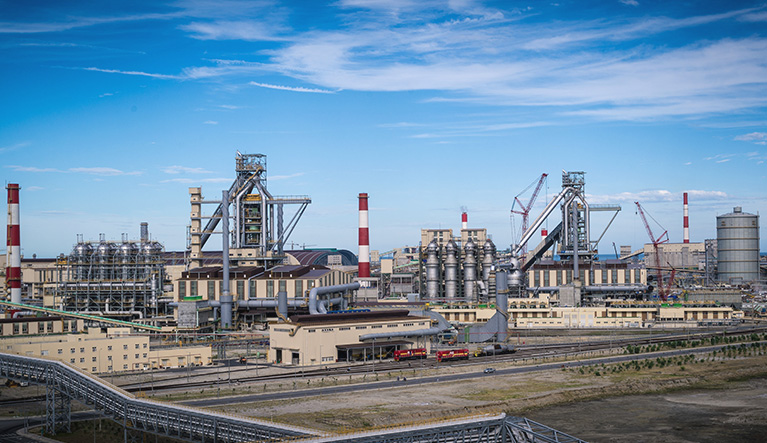When the hot air temperature is lower than 900°C, high-alumina bricks are used for the lining and checker bricks in high-temperature areas, while high-grade clay bricks are used for the remaining areas.
When the temperature is between 900-1100°C, high-alumina bricks, mullite bricks, or sillimanite bricks are selected for lining and checker bricks in high-temperature areas, while high-alumina bricks and high-grade clay bricks are used for the remaining parts.

Stove Lining:When the air temperature exceeds 1100°C, low-creep high-alumina bricks, mullite bricks, or sillimanite bricks must be used for the lining in high-temperature areas. The insulation layer used for the lining should have a material that matches or is similar to that of the working layer lining. The most commonly used checker bricksarehoneycomb checker bicks, butlarge sized porous or nested checker brcks are also used.
Hot Blast Stove Top: When the crown temperature exceeds 1450°C, a corrosive agent is produced, causing corrosion of the shell and cracks or cracks. Therefore, it is appropriate to spray a layer of acid-resistant material.
Combusition Chamber: Similar to the regenerator, the combustion chamber's air-coal gas channels are usually built with clay bricks and high-alumina bricks. The upper part with radiation holes (etched nuclei accounts for the whole reflection of food indiscriminately) can be made of mullite bricks or mullite-corundum bricks. The use of refractory castables with pre-made nozzles for wear-resistant grinding has a very good effect and facilitates installation.
Hot Blast Piping Lining: The lining of the hot blast pipe and the hot blast pipeline connected to the blast furnace are made of high-alumina cement or phosphate refractory castables. The lining of joints or elbows cast with refractory castables has a good overall integrity and is effective.
Hot blast valve refractory material: The neck of the hot blast valve is affected by heat on both sides, mechanical vibration, corrosion, temperature changes, and other factors. The working conditions are poor, and the valve lining body is usually built with clay bricks or high-alumina bricks, with a lifespan of 6-10 months. Therefore, high-alumina cement castables are often used in the lining body of the hot blast valve, with a servcelife of about 1.5 years.
Flue and Chimney: The flue and chimney are exhaust passages, and each hot blast stove is equipped with a flue. The waste gas is discharged from the chimney through the main flue. The flue lining is usually built with clay bricks. The chimney is usually made of concrete pouring or red brick masonry, with a clay brick protective layer at the bottom.
When the hot air temperature is lower than 900°C, high-alumina bricks are used for the lining and checker bricks in high-temperature areas, while high-grade clay bricks are used for the remaining areas.